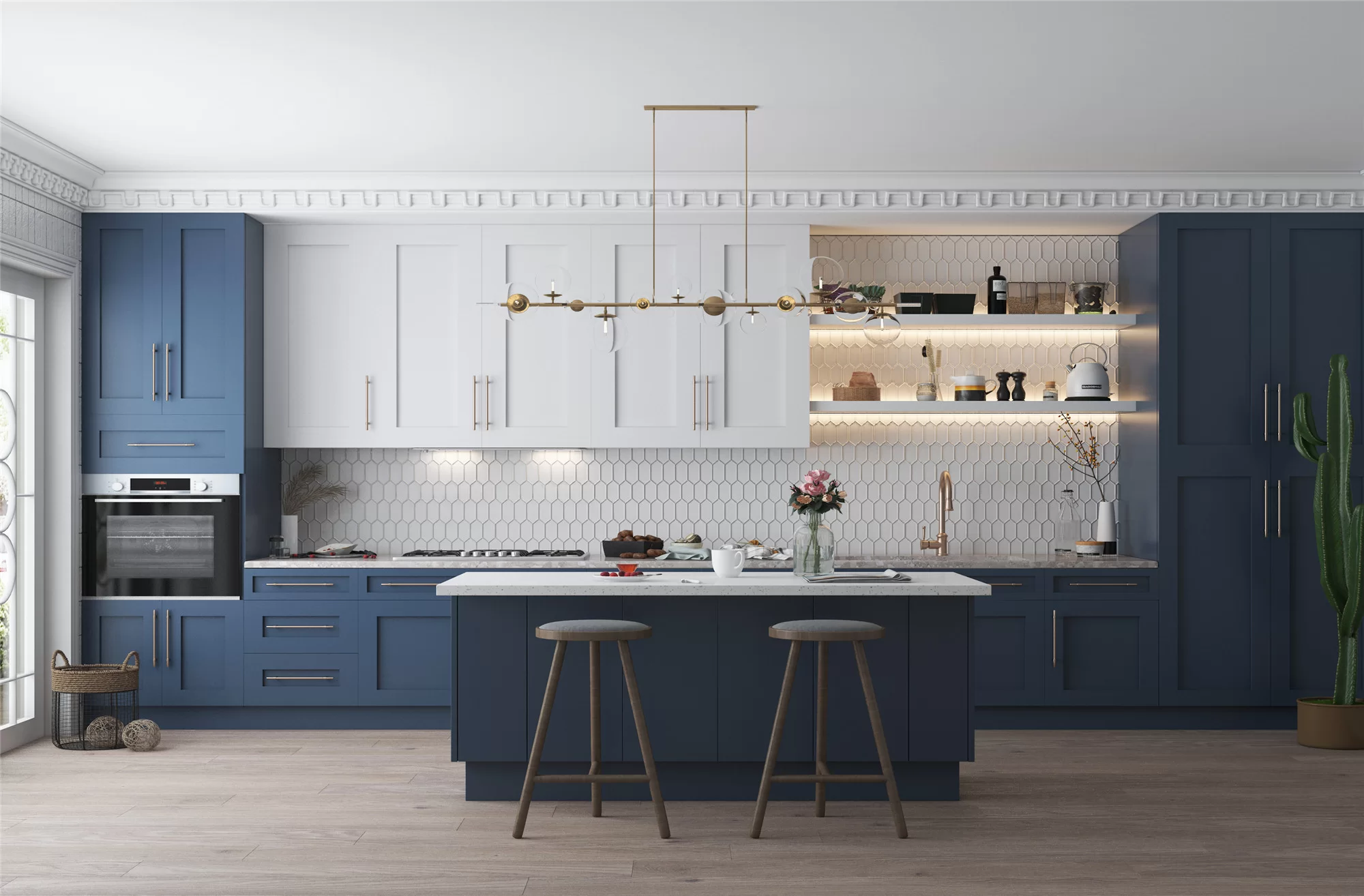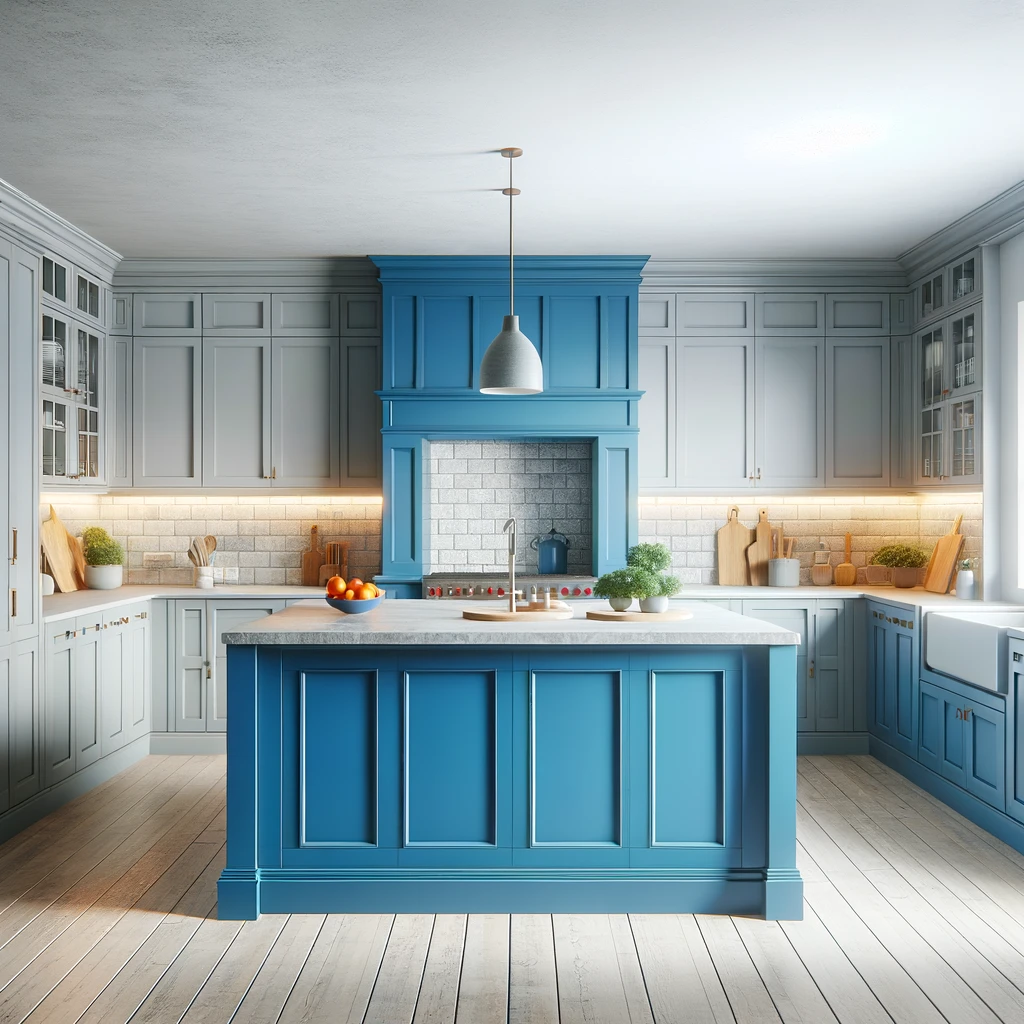
When designing a kitchen, it’s essential to understand the difference between wall cabinets and base cabinets. Both play a critical role in your kitchen’s functionality and aesthetics, but they serve different purposes. Knowing these differences can help you make the best choices for your kitchen layout and storage needs. Let’s dive into the key distinctions between kitchen wall cabinets vs. base cabinets.
What Are Wall Cabinets?
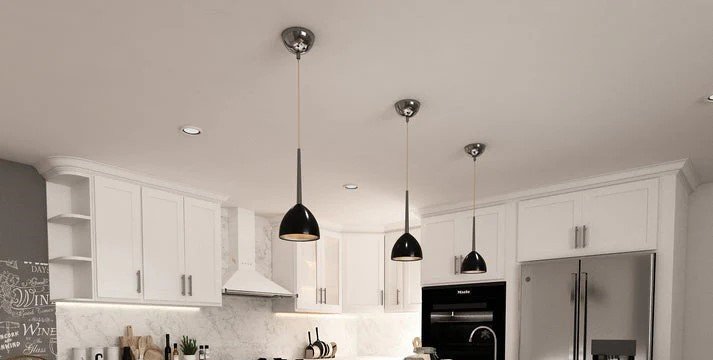
Wall cabinets are installed on the walls above countertops, appliances, or sinks. Their main purpose is to provide convenient storage for easily accessible items while conserving counter and floor space. These cabinets are ideal for storing dishes, glasses, spices, and other essential kitchen design items. Compared to base cabinets, wall cabinets are typically shallower, measuring between 12 and 18 inches deep. This design not only enhances accessibility but also helps maintain a visually open space.
The height of wall cabinets can differ, with some designs reaching up to the ceiling, while others allow for decorative features or additional storage solutions like open shelving. Wall cabinets are particularly effective in optimizing vertical space in compact kitchens.
What Are Base Cabinets?
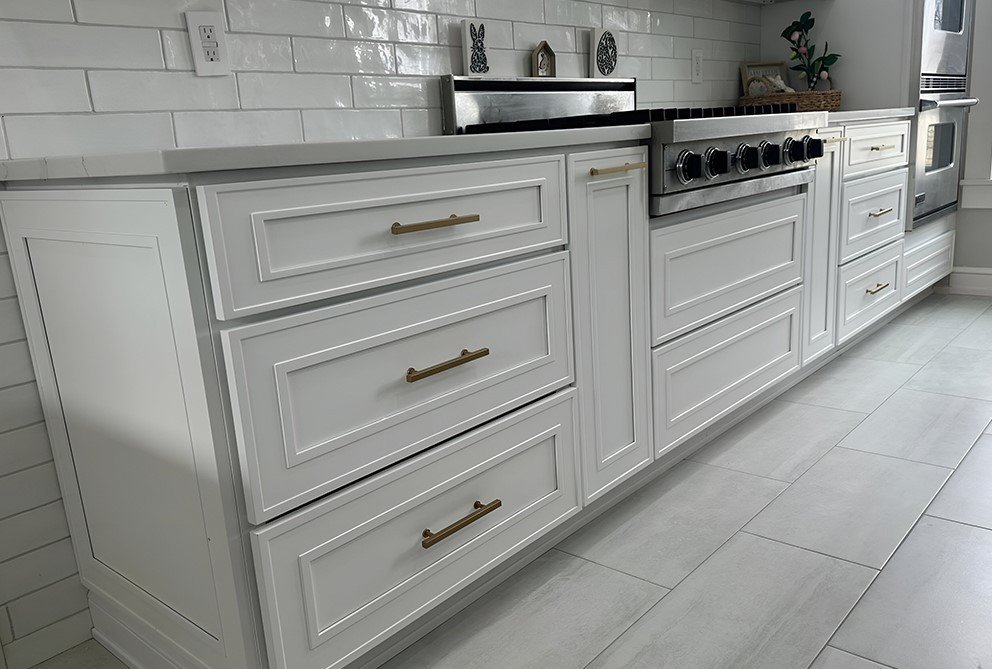
Base cabinets serve as the cornerstone of kitchen storage solutions. Positioned directly on the floor, they provide essential support for countertops, sinks, and major appliances. Generally, base cabinets are deeper than their wall-mounted counterparts, averaging 24 inches in depth. This design allows for ample storage capacity, accommodating larger items like pots, pans, and baking trays.
Typically, base cabinets come with a variety of organizational features, including drawers, shelves, and pull-out systems, to enhance efficiency and accessibility. They play a crucial role in meeting the majority of your kitchen’s storage requirements while also supporting countertops that function as vital work surfaces.
Main Differences Between Wall Cabinets and Base Cabinets.
Location: The main difference between wall cabinets and base cabinets is where they are placed. Wall cabinets are installed above the countertop, while base cabinets sit on the floor and often hold the sink or cooktop.
Storage Needs: Wall cabinets work well for lighter items that are used often, like dishes and glasses. Base cabinets are meant for larger, heavier items such as pots, pans, and small appliances.
Depth: Wall cabinets are shallower, usually 12-18 inches deep, making it easier to access items. Base cabinets are deeper, around 24 inches, providing more space for bulkier items.
Functionality: Base cabinets are built for heavy kitchen tasks like food prep, while wall cabinets offer easy storage for everyday essentials.
Choosing Between Wall Cabinets and Base Cabinets.
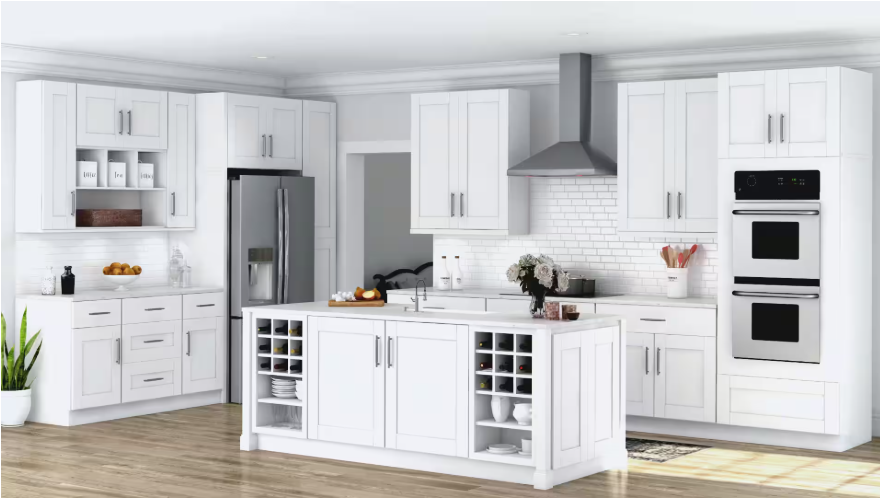
When planning your kitchen space, think about how to balance wall cabinets and base cabinets based on your layout and storage requirements. In a smaller kitchen, adding more wall cabinets can help you store more items, while a bigger kitchen might give you the chance to create larger base cabinets.
For example, if you often prepare big meals or host gatherings, you might need more base cabinet space for your cooking tools and appliances. On the other hand, if you like a clean, simple look, you could choose fewer wall cabinets and use open shelves or decorative pieces to make the space feel more spacious.
Cabinet Styling Choices for Wall and Base Cabinets.
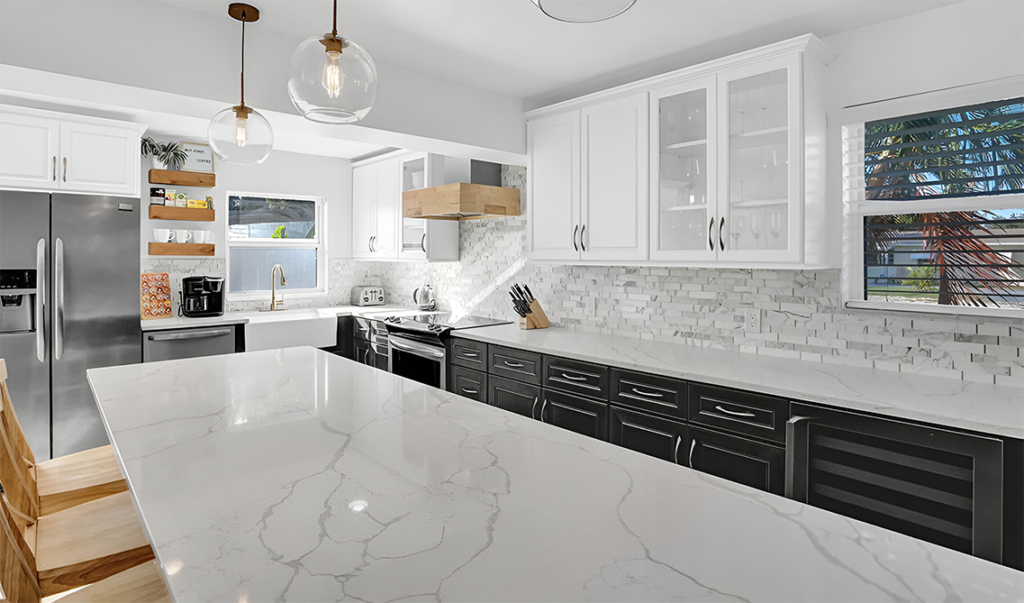
Wall cabinets and base cabinets are available in many styles and finishes to fit your kitchen’s look. You can choose from modern flat-panel doors to traditional Shaker cabinets, allowing you to personalize both types to suit your taste.
For a modern vibe, light-colored or glass-front wall cabinets can enhance natural light and create an airy feel in your kitchen. For base cabinets, darker or bolder colors can provide a strong foundation and add richness to the space.
The choice of hardware also influences the cabinet style. Stainless steel or matte black handles offer a contemporary touch, while classic handles
or knobs can bring a timeless charm.
Custom Storage Solutions for Wall and Base Cabinets
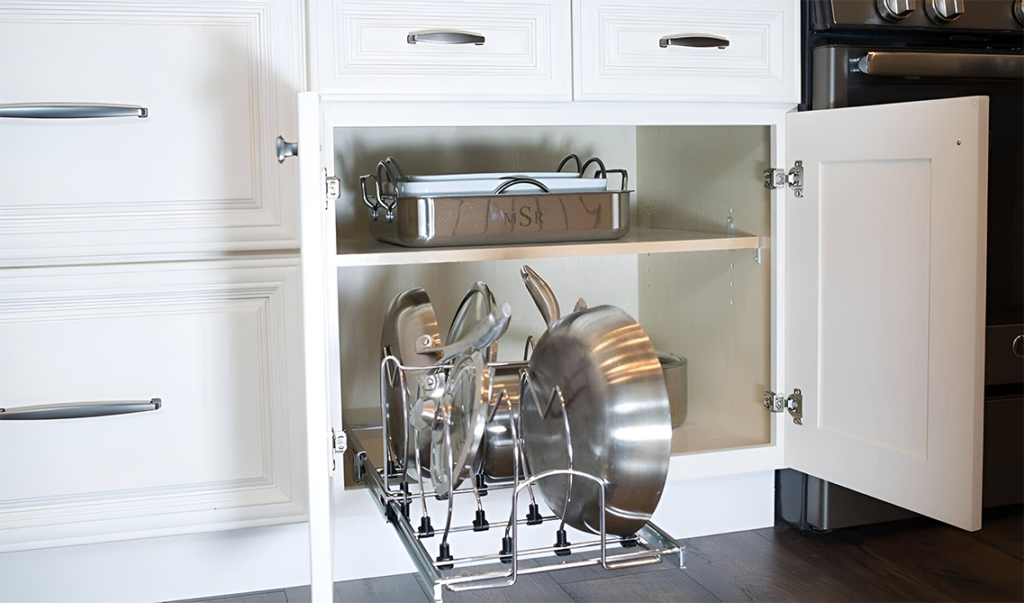
You can improve the usefulness of wall and base cabinets by adding custom storage options. For wall cabinets, think about adding pull-out spice racks, lazy Susans, or vertical dividers for cutting boards and baking sheets. These features can maximize your vertical storage.
For base cabinets, common upgrades are pull-out shelves, deep drawers, and built-in trash bins. In an L-shaped or U-shaped kitchen, corner base cabinets with rotating or pull-out trays can help utilize tricky spaces better.
Kitchen Layout Considerations
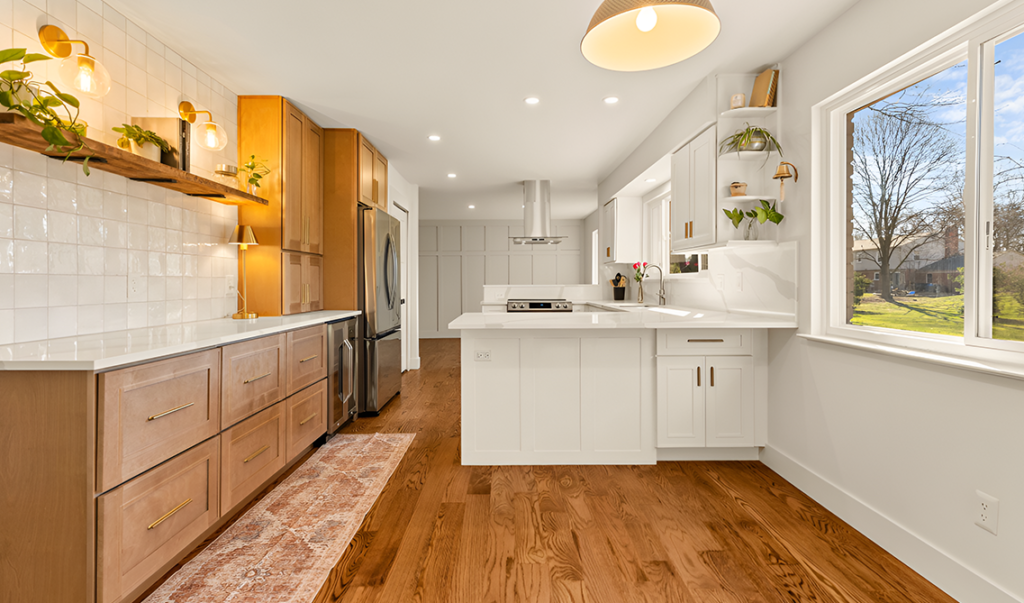
When designing your kitchen layout, it’s important to balance wall cabinets and base cabinets. If you have a lot of wall space, adding more wall cabinets can help keep your countertops clear by storing daily items. But be careful not to add too many wall cabinets, especially in smaller kitchens, as it can make the space feel tight.
In larger kitchens, having more base cabinets can provide great storage for bigger items and give you plenty of countertop space. Think about adding a kitchen island with base cabinets for extra storage and workspace.
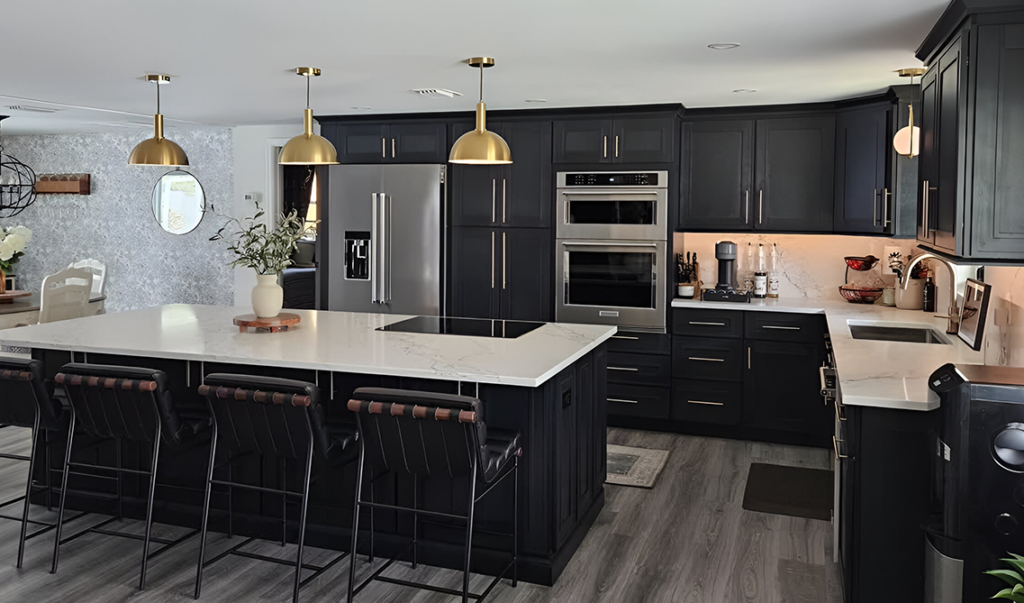
Conclusion
Kitchen wall cabinets and base cabinets each have their benefits based on your kitchen design and storage requirements. Wall cabinets make use of vertical space and are great for storing lighter items, while base cabinets are designed for heavier storage, supporting countertops, and holding larger kitchen tools. Both are important for a well-organized and efficient kitchen.
Frequently Asked Questions
- Are there particular styles or finishes for wall and base cabinets?
Both wall and base cabinets come in many styles, including Shaker, flat-panel, and raised-panel. You can choose from finishes like natural wood colors or painted options such as white, gray, or navy.
- Can wall cabinets take the place of base cabinets?
Wall cabinets are not designed to take the place of base cabinets. They are shallower and cannot hold heavy countertops or appliances. Base cabinets offer the depth and support needed for these purposes.
- What are the usual depths for wall and base cabinets?
Wall cabinets are generally 12 to 18 inches deep, whereas base cabinets are deeper, usually about 24 inches. This extra depth helps base cabinets store bigger items and provides better support for countertops.

